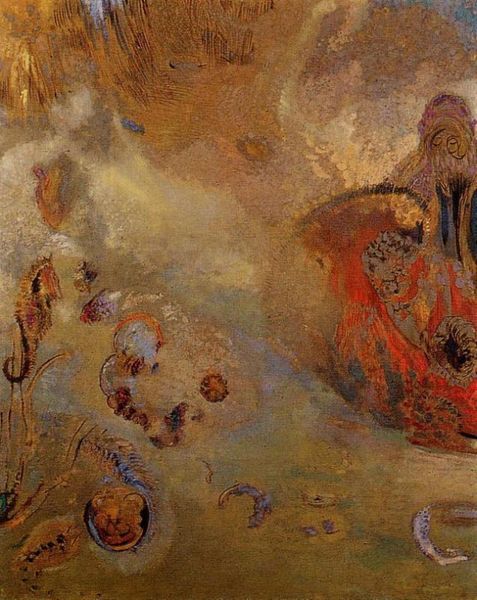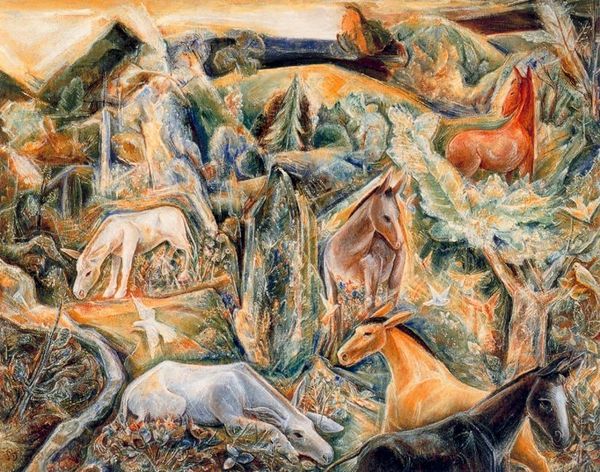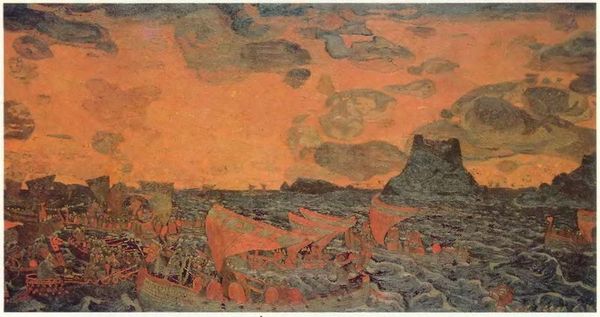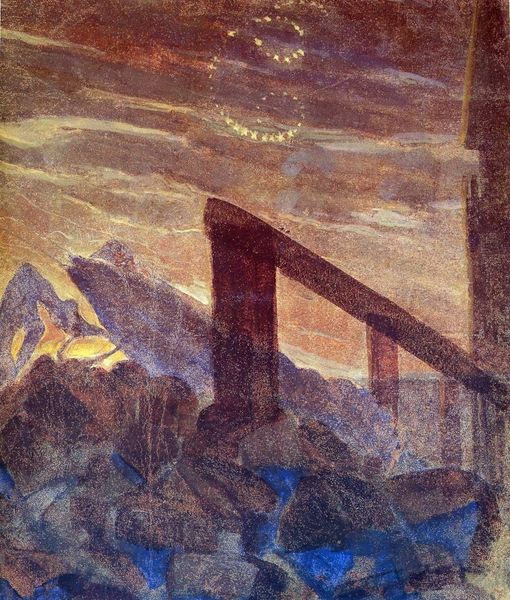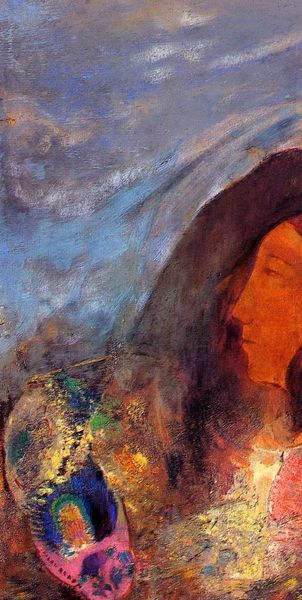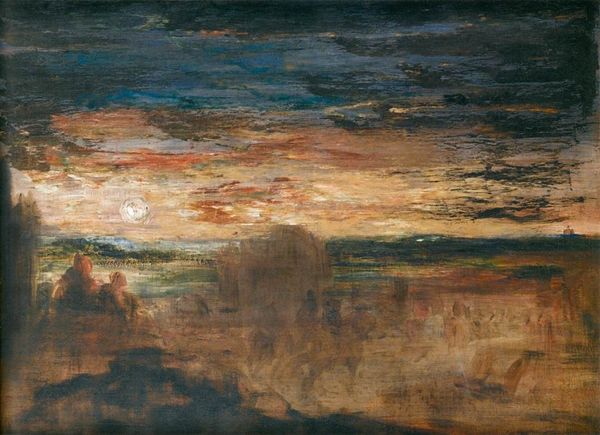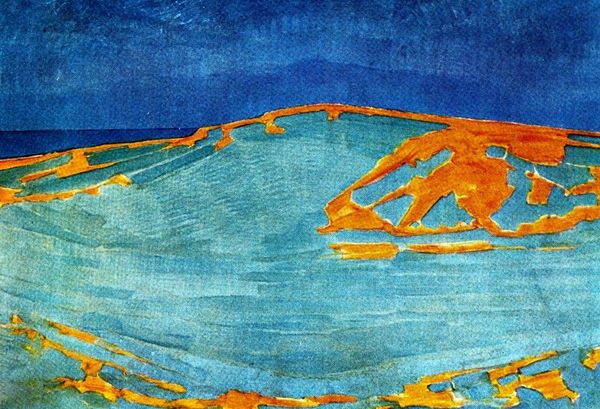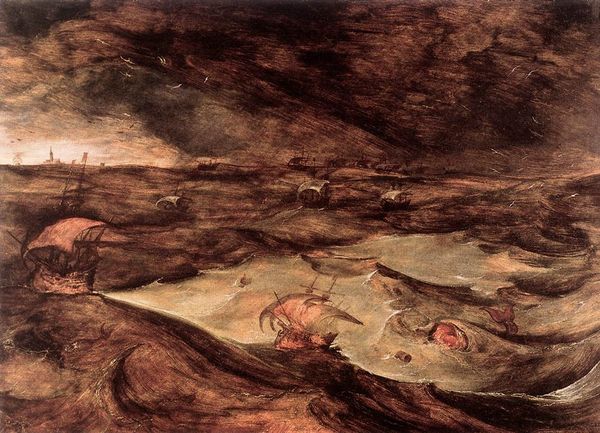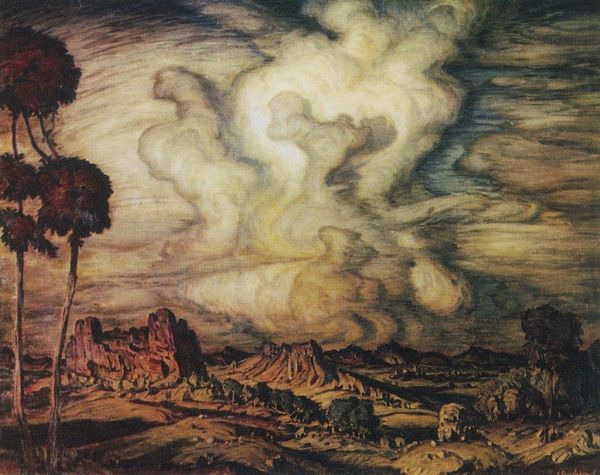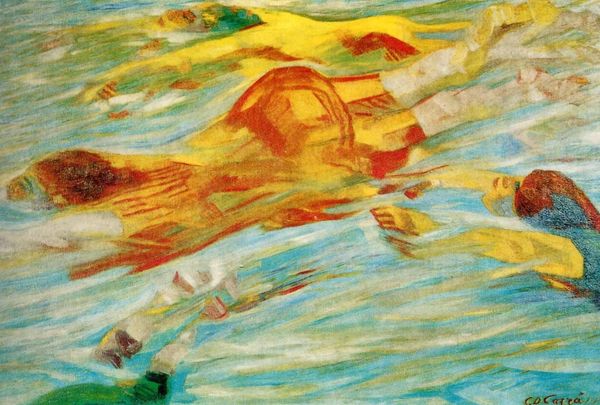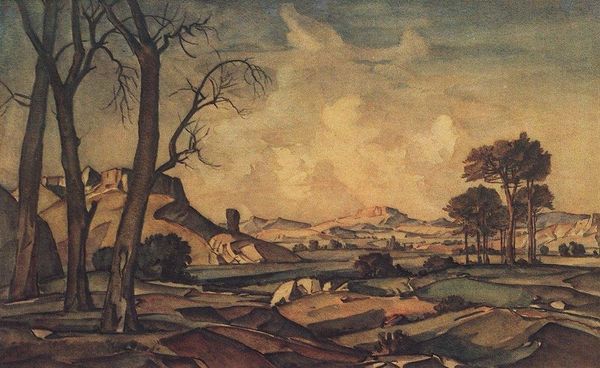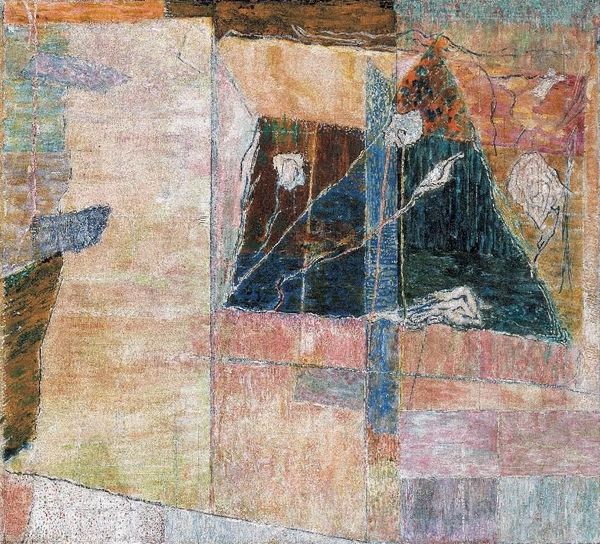
painting, oil-paint, impasto, architecture
#
painting
#
oil-paint
#
landscape
#
oil painting
#
impasto
#
geometric
#
russian-avant-garde
#
architecture
Copyright: Public domain
Curator: Let’s discuss Nicholas Roerich's "Polovtsian Camp" from 1908, rendered in oil paint using the impasto technique. What’s your initial take? Editor: There’s a hazy dreaminess to it, a kind of primordial landscape with strange, hive-like structures in the foreground. It feels ancient and unsettling. Curator: Roerich was deeply invested in Russia's pre-Christian history and spiritual roots. He positioned the canvas as an examination of Russian identity, drawing on folklore and archaeological findings. The nomadic Polovtsians certainly play a prominent role here in terms of the nomadic symbolism and tribal representation. How do we navigate his rendering today, particularly given modern understandings of cultural appropriation? Editor: Visually, the beehive structures evoke ancient dwellings but also remind me of burial mounds, markers of territory and ancestors. The geometric patterns are visually stimulating, but is he fetishizing the tribal symbolism and, by extension, exoticizing an ancient culture without real understanding? Curator: The painting also has elements of stage design; Roerich was involved with Diaghilev’s Ballets Russes and this work informed sets for "Prince Igor". This lends it an orientalist aura, with Roerich potentially leaning on pre-existing cultural imaginaries from that context. This orientalism does potentially flatten cultural identity and minimize self-determination. Editor: The light—this diffused golden wash—dominates the scene. Is it a metaphor, do you think? For something obscured? Or a glorification? Curator: Both, perhaps. He's certainly mythologizing the past. Considering the painting’s creation in the early 20th century, when nationalist sentiments were strong, Roerich's idealization risks perpetuating a romantic, and ultimately, skewed vision. But, is the landscape itself important? Roerich spent significant amounts of time recording ancient sites and stone age settlements across Russia and Scandinavia. How can this landscape tell the viewer about the political project here? Editor: True. Those ochre and brown shades suggest earth, resilience, something grounded and essential. Looking at the light interacting with that earthy palette... it's evocative, stirring even. A powerful visual language. Curator: It raises important questions about whose stories we tell, and how. Editor: Exactly. The shadows and symbols are portals, but also potential pitfalls. It’s a fascinating and thought-provoking example of its era.
Comments
No comments
Be the first to comment and join the conversation on the ultimate creative platform.

